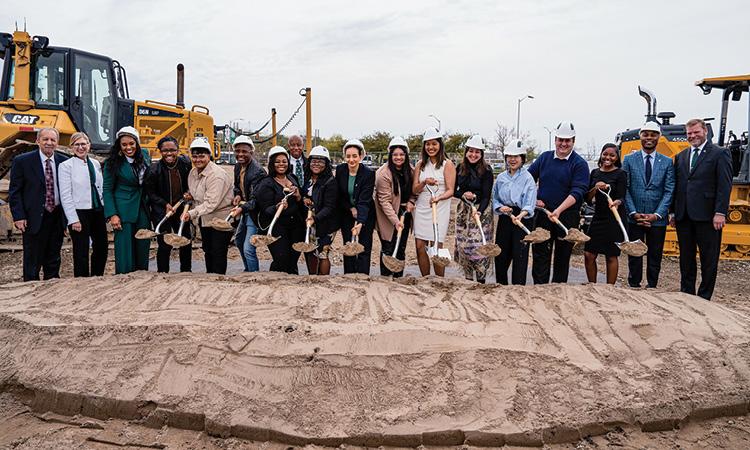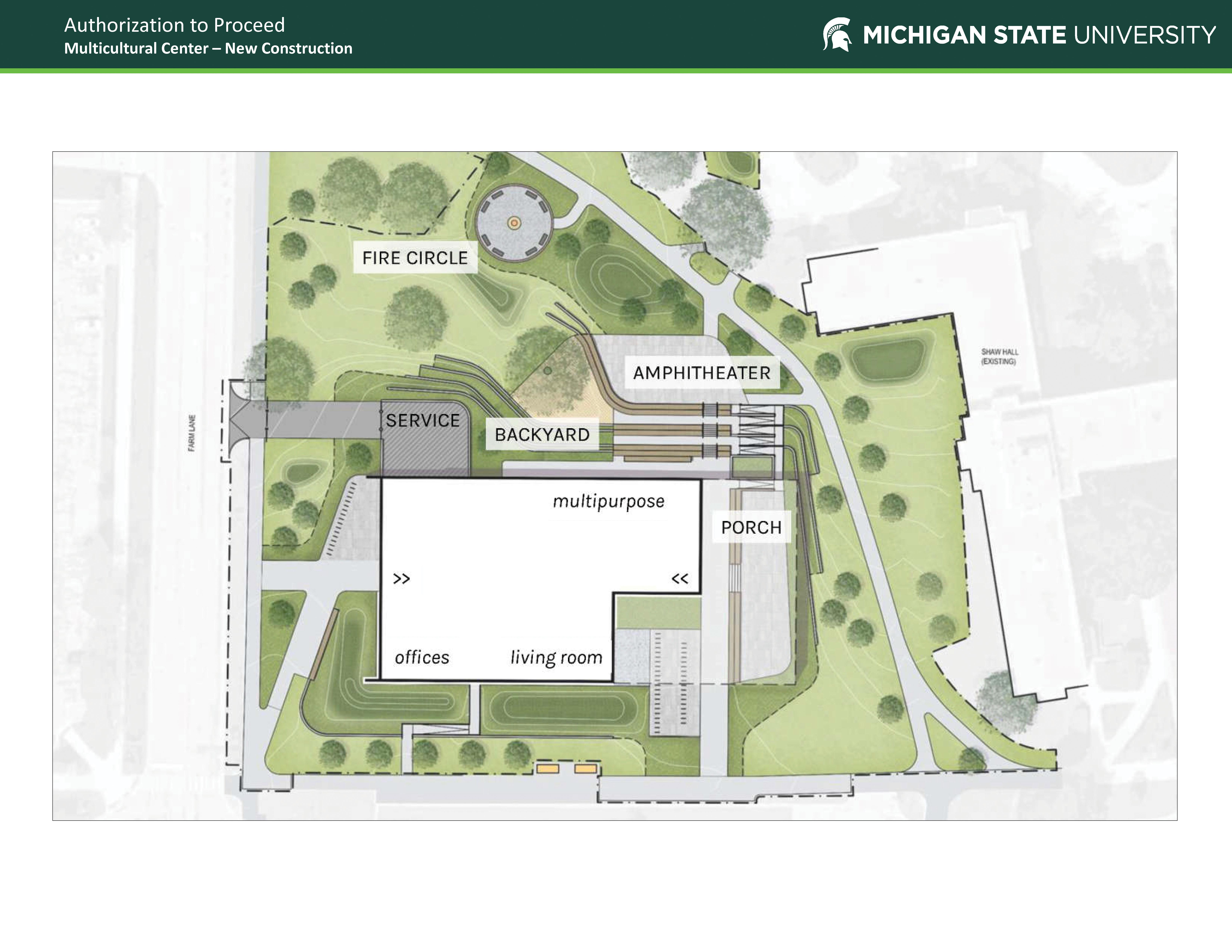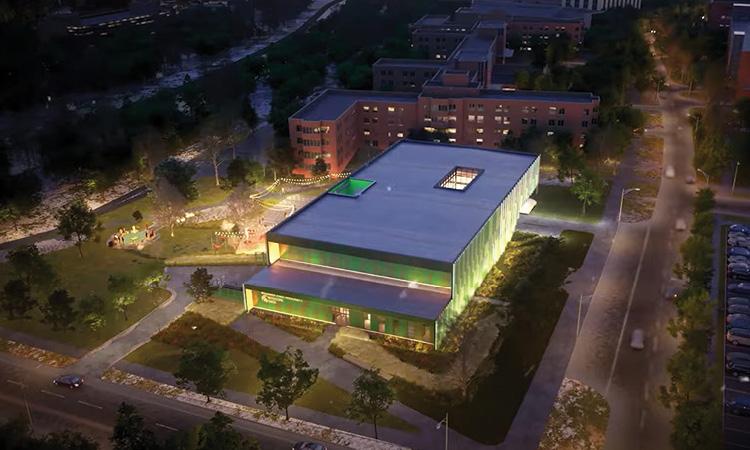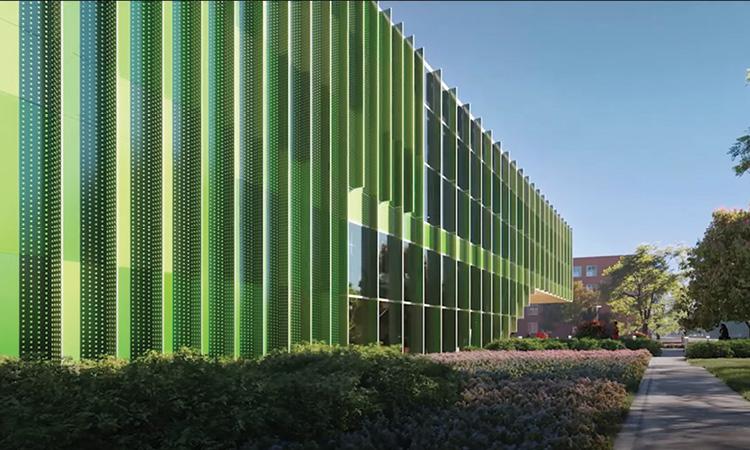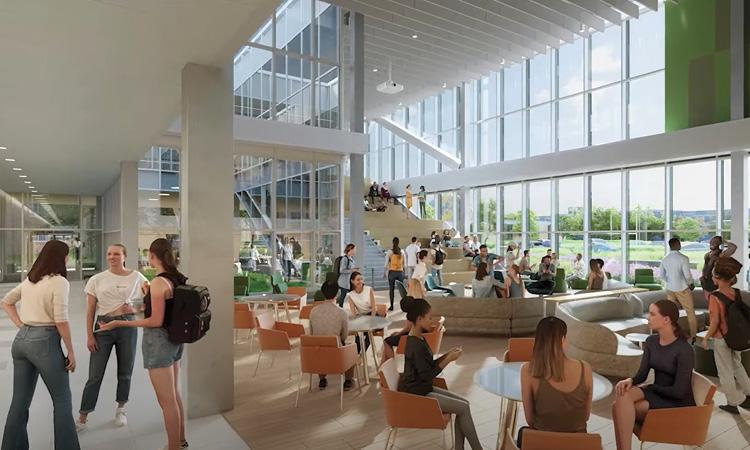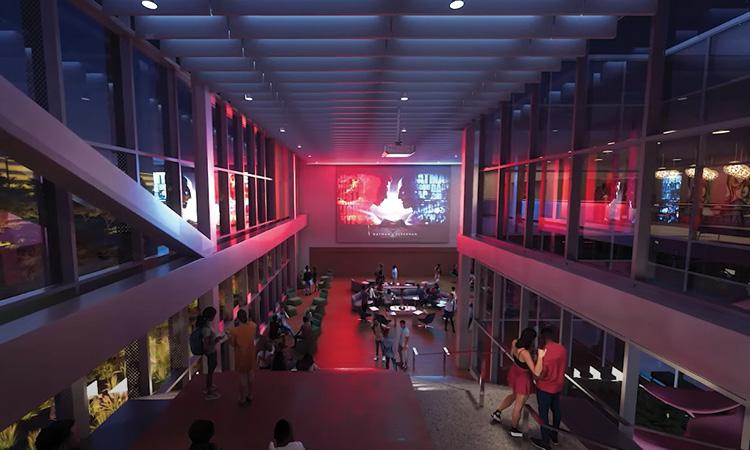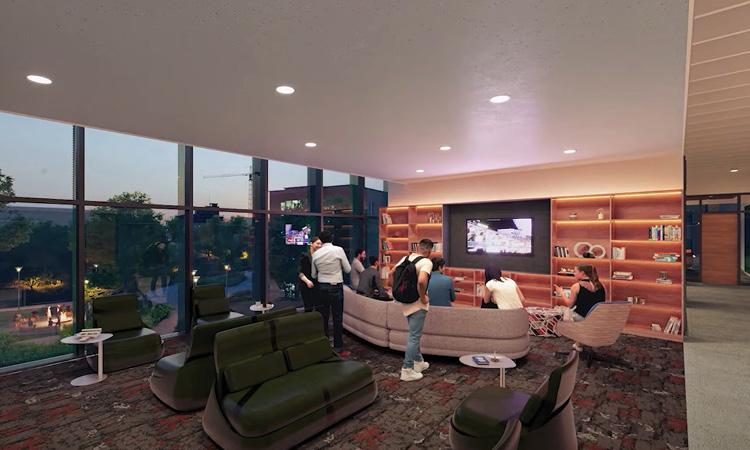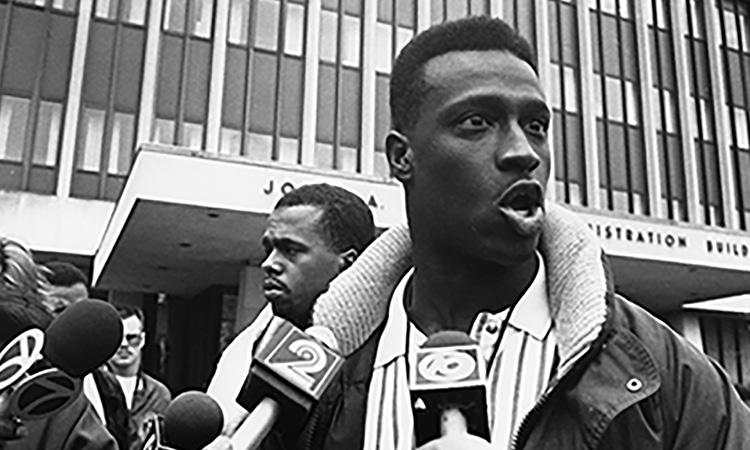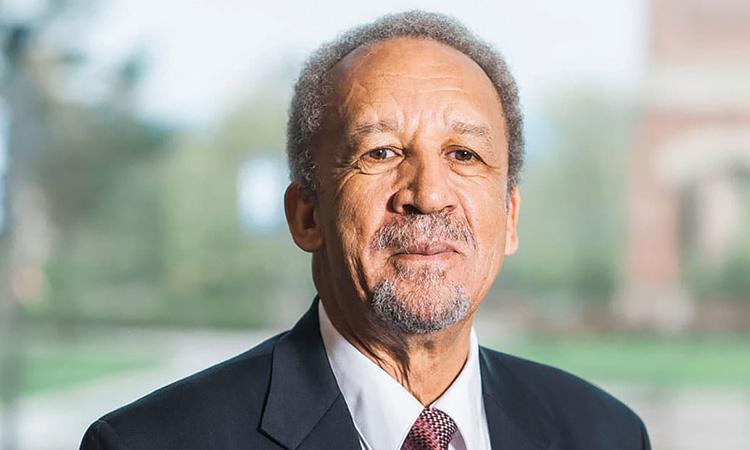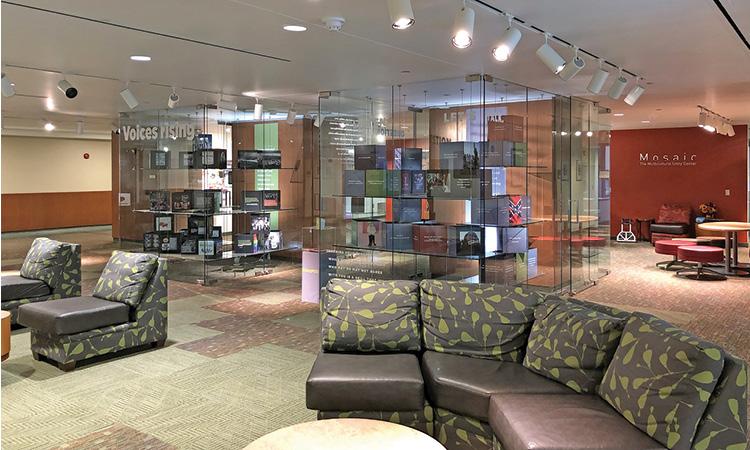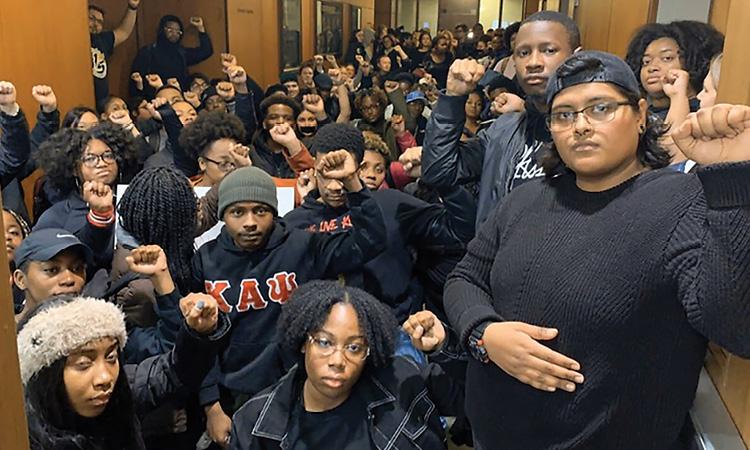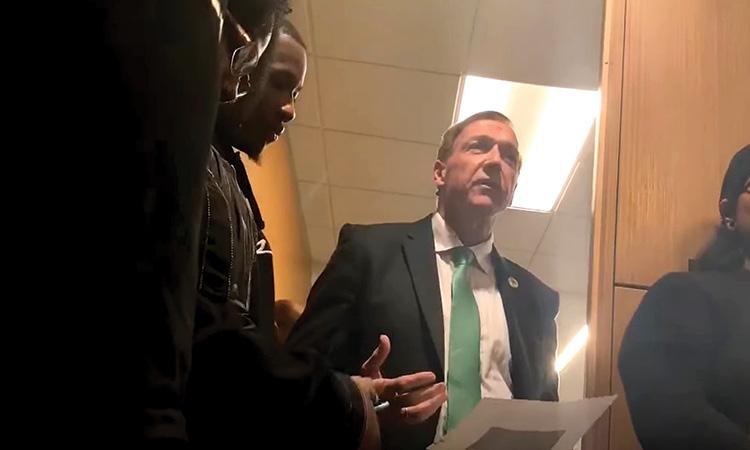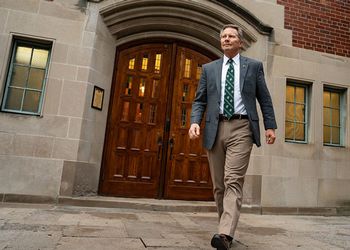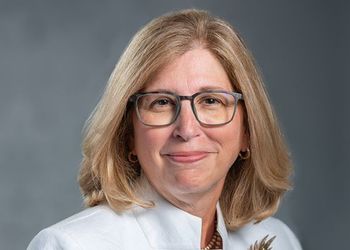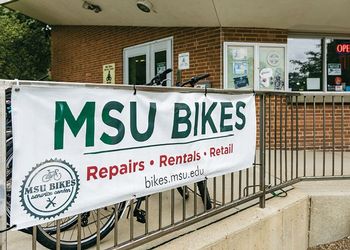Making Our Place In The Future: The MSU Multicultural Center
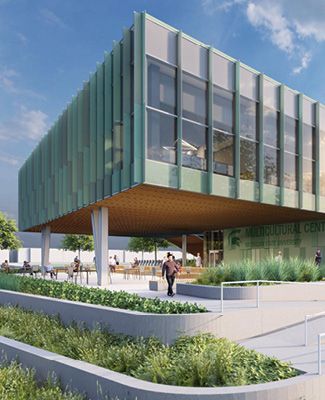
Making Our Place In The Future: The MSU Multicultural Center
After decades of advocacy, the construction of a campus multicultural center is underway, giving Spartans a place to find themselves and each other.
June 15, 2023Like generations of MSU students before her, Shiksha Sneha, ’21, remained skeptical but resolute, guarded yet hopeful. While Sneha hoped MSU leadership would respond to students’ intensifying push for a freestanding multicultural center on the East Lansing campus—and vigorously lobbied for such as a member of the aptly named Students for a Multicultural Building organization—decades of previous student advocacy for such a facility had fallen short of that victory.
“Honestly, it felt like an impossible task,” Sneha said of her group’s advocacy, which started in earnest in 2019.
On April 21, 2023, however, Sneha stood before an energized crowd assembled at the corner of North Shaw and Farm Lanes on the MSU campus. The “impossible task” had become reality. More than 250 MSU students, alumni, faculty, staff and leaders gathered for a groundbreaking ceremony to mark the campus’s newest building: the 34,000-square-foot Multicultural Center.
“This day is unreal,” Sneha began the program while standing before a green sign that fittingly read “Spartans Will.”
The Multicultural Center’s groundbreaking event offered a bricks-and-mortar example of MSU’s commitment to inclusion and acceptance. It created a promise of belonging on the MSU campus. And it honored the power of collective action.
The superlatives poured in from a flood of dignitaries in attendance. MSU Interim President Teresa K. Woodruff, Ph.D., called the groundbreaking ceremony “a milestone in the physical and cultural journey of campus and community.
“The Multicultural Center will afford us the physical spaces to have critical conversations, the cultural spaces to be ourselves and the affirming educational spaces, giving everyone a place to grow,” she said.
MSU Board of Trustees Chair Rema Vassar championed the Multicultural Center—a $38 million facility slated to open in fall 2024—as a safe and welcoming gathering place embodying MSU’s values.
“It will be a place of light and of inspiration, of air, of peace,” Vassar said.
Thoughtfully and intentionally designed to drive student success and contribute to campus life through lively intellectual collaboration and cultural exchange, MSU Vice President and Chief Diversity Officer Jabbar R. Bennett, Ph.D., touted the Multicultural Center as a place that would help facilitate connections and elevate the MSU experience.
“[It] will help deepen relations and strengthen the sense and feeling of community for Spartans to come many generations ahead of us,” Bennett said.
A LONG, WINDING ROAD
While construction of the Multicultural Center is now underway, the seeds of the project were planted decades ago. On the heels of rising student activism in the 1960s and growing racial and ethnic diversity at college campuses in the 1970s, MSU students began pressing university administration for a campus multicultural center.
“As Michigan State students visited peer institutions and saw what they had, they returned here and began pushing more and more to make the MSU campus more conducive to their welfare,” said Lee June, a longtime MSU professor and administrator who first heard students’ pleas for a multicultural center not long after his arrival at MSU in 1973.
Throughout the 1970s and into the 1980s, calls for such a space sharpened.
In 1989, more than 100 students flooded the Hannah Administration Building for a 10-day study-in. That movement sparked then-MSU President John DiBiaggio to sign off on the development of the first MSU Institutional Diversity: Excellence in Action (MSU IDEA) plan—an endeavor to advance “excellence through diversity within the Michigan State University community.”
Three years later, MSU IDEA II featured 50 initiatives designed to prioritize diversity, equity and inclusion at MSU and spurred calls for a stand-alone, on-campus multicultural center.
Early on, June said MSU administration held various concerns about a freestanding multicultural center, from the ever-present challenge of funding to fears that such a center might drive self-segregation among students. Those concerns, coupled with students’ eventual departure from campus, frequently stalled momentum toward a freestanding building. That is, until another wave of students took up the charge.
In the early 1990s, a number of diverse student groups united to form the Council of Racial and Ethnic Students (CORES), a pivotal turning point in the accelerating advocacy for a freestanding multicultural center.
“Early in the game, it was largely Black students advocating for this, but when other racial and ethnic groups joined the movement and started pressing the university, things picked up,” said June, who was then serving as MSU’s vice president for student affairs and services.
CORES’s coordinated push for a multicultural center resulted in MSU administration offering up two potential spaces: the basement of the MSU Union and Wills House, the historic home located in the campus’s West Circle neighborhood. Lee recalls long, passionate and thoughtful discussion among student leaders about whether to accept one of the administration’s proposed locations or to reject the proposal and continue the crusade for a freestanding building.
Eventually, June said, the students reluctantly agreed to an “imperfect solution” and reasoned “something would be better than nothing.” They accepted space in the basement of the MSU Union, and the Multicultural Center opened there in 1999.
“I don’t think central administration over the years saw how such a center would enhance the sense of belonging on campus,” Lee said. “Students weren’t being adversarial, but were rather saying, ‘I love the university and want to see it become a better place.’ They were advocating out of love.”
A DECADES-OLD VISION BECOMES REALITY
Though the century flipped and an on-campus multicultural center existed, student leaders did not abandon their vision for a bigger and more well-resourced space. In 2013, MSU administration moved the Multicultural Center to the MSU Union’s second floor and rebranded it as MOSAIC: The Multicultural Unity Center.
But still, student advocacy for a stand-alone building remained.
In 2019, Sarah McConville, a James Madison College student and the chief diversity and inclusion officer for the MSU Residence Halls Association, launched a petition to bring a freestanding multicultural building to the MSU campus. The petition, coupled with a number of well-reported racially charged incidents in and around MSU, generated a new and enterprising wave of activism around the appeal for a stand-alone multicultural center.
Leaders from CORES, the Council of Progressive Students (COPS), the Black Student Alliance and other student organizations formed Students for a Multicultural Building. The united group organized a three-day sit-in at the Hannah Administration Building and crafted a 10-point plan to present to then-President Samuel L. Stanley Jr., M.D.
“We had a shared vision and mission led by the call for a freestanding multicultural building,” said Miracle Chatman, ’20, who co-chaired the nascent organization.
Students posited that a more robust multicultural center would foster greater belonging university-wide. This, they contended, would improve retention rates for students from historically marginalized groups and stimulate a more inclusive, connected Michigan State community since the building would welcome all students.
“The students made a strong case that such a center would help students of color while also being a positive factor for everyone at the institution,” June said.
Stanley embraced the idea of a freestanding multicultural center, which Lee called crucial to the project’s rapidly accelerating momentum after decades of slow progress. The formation of a steering committee and a feasibility study soon followed before the Board of Trustees approved the planning phase of the Multicultural Center project in September 2021. Decades of advocacy and lobbying, rallies and meetings, plans and proposals, had finally delivered action.
“There’s been a lot of time and energy sacrificed over the years, but that’s important because this center will impact student life on campus in a positive way,” Chatman said.
For June, whose mind is flooded with the names and faces of MSU students who pushed for a freestanding multicultural center over the last 50 years, the announcement served as a reminder that nothing worthwhile comes easy.
“When you deal with systems and try to improve environments, it can take a long time for things to come to fruition,” June said. “I’m elated Michigan State University came to the conclusion that such a center was needed to make the university one where everyone can feel they have a place.”
A PLACE TO WELCOME AND CONNECT
The moment the Multicultural Center project received the green light from the Board of Trustees, Vennie Gore, MSU’s senior vice president for student life and engagement, championed process over product. Specifically, he wanted student, alumni and community voices to drive the building’s design.
“This was an effort driven by students over the years, and the center needed to reflect that,” Gore said, adding that the Multicultural Center’s inclusive planning and creative processes resulted in a design that promises to stir intercultural learning, sharing and interaction. “The goal is a place all students can call home.”
Designed by SmithGroup and punctuated by expansive windows facing the Red Cedar River, the Multicultural Center will feature multipurpose rooms, including a large, 300-person gathering space that can be divided into three equal classrooms, as well as an outdoor amphitheater created to host performances of music, dance, theater and other forms of cultural expression. Additional design elements have been included to drive interaction, such as a grand central staircase that doubles as seating, a living room and a community kitchen.
“It’s a building for students wanting to build community and culture with one another,” Sneha said.
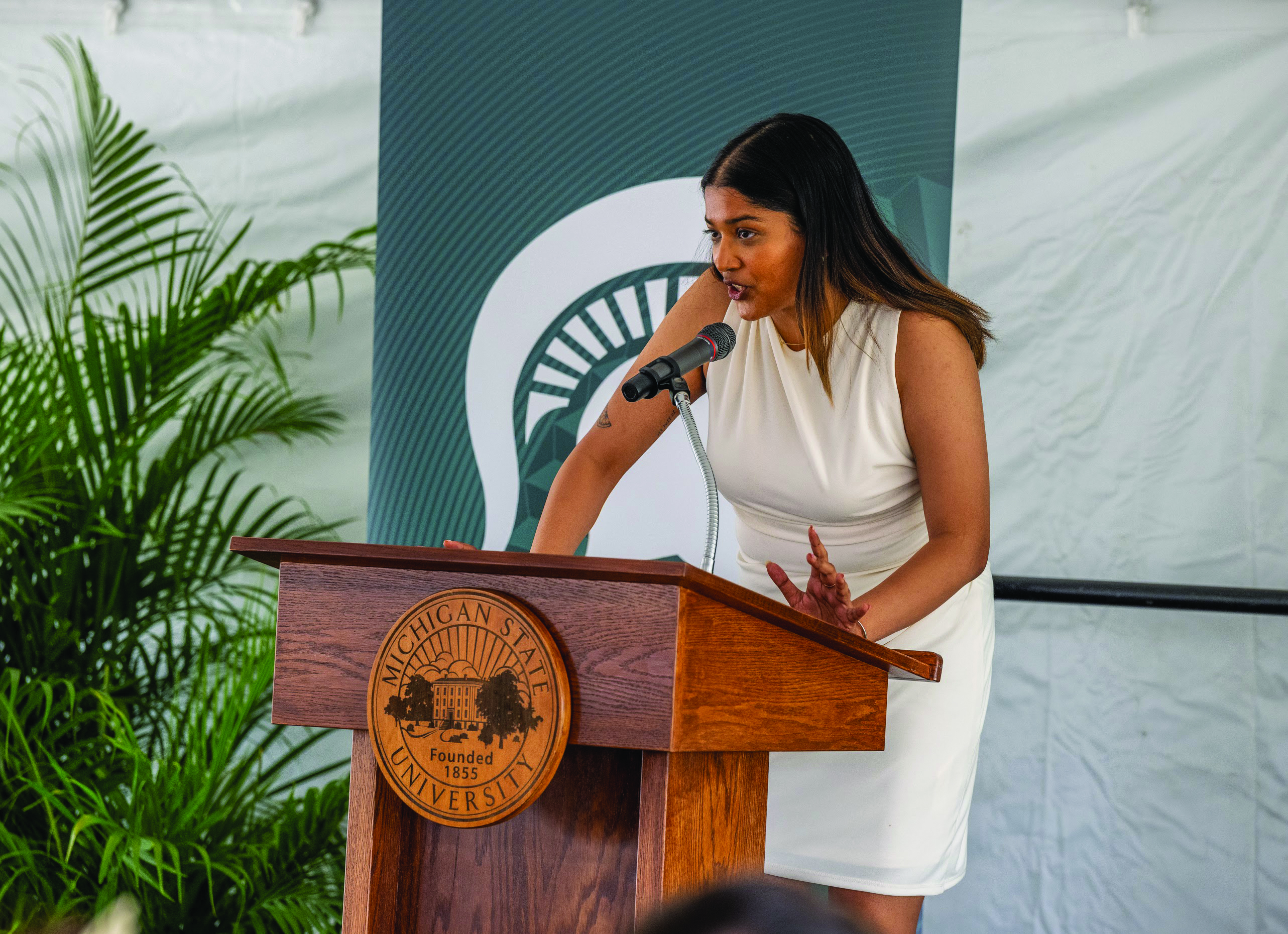
Cultural celebration is also baked into the design, including an art gallery wall and a ceremonial fire pit honoring Indigenous communities, while offices for student groups and the Dreamer Center, a hub of resources for students of mixed-immigration status, will further drive a sense of belonging and connection.
“It’s about having a stronger Michigan State University and making it easier for students to navigate the university and find their place on campus,” Chatman said.
While the Multicultural Center is one of a number of recent and upcoming campus projects planned to facilitate student success and energize campus life—others include the Cherry Lane Fields Recreation Center, Campbell Hall Renewal and the STEM Building—it’s a venue that holds special impact to many, given the decades-long advocacy behind its creation.
“I’m proud we were able to continue that legacy of advocacy for all those who came before us and bring this project forward,” a smiling Sneha said. “Now, I cannot wait for the positive impact it will have on future Michigan State students.”
HEAR MORE:
Renderings courtesy of SmithGroup.
Historic photos courtesy of Michigan State University Archives and Historical Collections.
Contributing Writer(s): Daniel P. Smith


